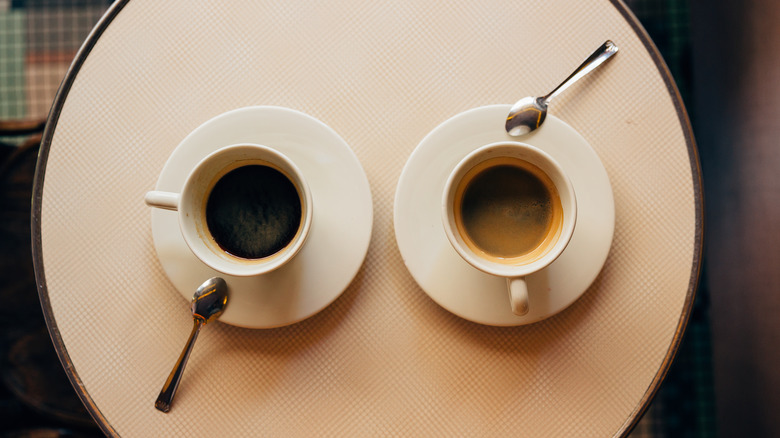Why The Shape Of Your Coffee Mug Matters For Hot Drinks
You don't need to be a wine connoisseur to know that the shape of the glasses really matters, which is why there's a wide variety of glass types to accommodate different wines. But what about the vessel you use for hot coffee? Turns out, even the morning rush and caffeine's practicality can't overshadow the delicacy of that magic drink. Its perceived taste and flavors are influenced not only by the color but also the shape of your mug.
There's a matter of perception: A 2017 cross-cultural online study via Science Direct revealed that respondents perceived coffee to have stronger aromas in narrower cups, more sweetness in wider cups, and more bitterness and intensity in shorter ones. Then, a 2018 taste experiment via Science Direct involving 287 untrained and expert coffee lovers confirmed that the cup type does affect the coffee's taste. It was found that the tulip cup offered the best aroma, while sweetness and intensity were felt more with the split cup. Just as with wine, the liquid surface area determined by the mug shape can affect the rate of heat loss and oxidation, influencing how long it takes until the coffee becomes tepid and loses its luster. The internal shape and amount of headspace, meanwhile, influence the coffee's aromatic focus. An easily overlooked factor, the rim thickness can affect how much coffee flows into your mouth with every sip, which may alter your perception of flavors too.
Choosing the right mug shape for your coffee
Your nose and perception are as important to your coffee experience as your palate. Research suggests that, for most coffee drinkers, tulip or open-shaped mugs are more likely to enhance the coffee experience compared to split mugs. To intensify the aroma of your coffee, a cup with a narrow opening, such as a tulip cup, is the best choice. For example, an espresso cup is ideal for espresso and hot macchiato. Its small size helps retain heat and aroma while preventing the crema from spreading out. The small opening focuses the aroma and directs it into your nose as you have to tilt your head to drink. On the other hand, if sweetness or acidity is a priority, consider using a split cup. But it isn't always about aromas and flavors. A latte cup, for instance, shares the shape of an espresso cup but is wider to accommodate steamed milk and latte art.
In the end, there's no definitive rule for the perfect cuppa. Many factors can be considered, including your personal preferences. So have fun experimenting with different mug sizes, shapes, and materials before finding your perfect brew vessel.

